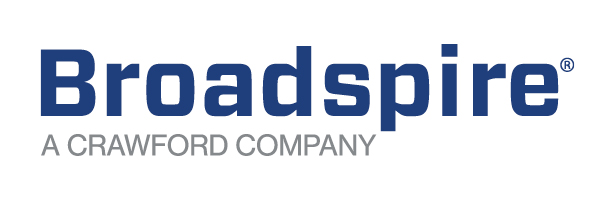
While tracking and managing hundreds of laws that regulate integrated disability and absence management (IDAM) is essential for employer compliance, implementation is where magic can happen. It is also where liability can lurk, which is one reason why hundreds of IDAM professionals gather annually at DMEC compliance conferences to enhance their understanding of these laws and find effective solutions.
While helping employees access and use entitlements, such as the federal Family and Medical Leave Act (FMLA), Americans with Disabilities Act (ADA), and paid family and medical leave (PFML) laws is done without fanfare, it influences every aspect of an employer’s business — from employee morale, retention, and productivity to company profitability.
This work entails navigating the labyrinthian terrain of IDAM-related accommodations and leaves of absence. And regardless of whether an employee’s needs stem from an addition to their family, an on-the-job injury, personal or family illnesses, disabilities, or other issues, IDAM professionals help find solutions that help employees stay at work or return to work as soon as possible.
“Your real job is interpreter for employees who need accommodations. You are their guide in one of their most trying times,” said Nora Burns, chief curiosity officer of The Leadership Experts and keynote speaker for the 2024 DMEC FMLA/ADA Employer Compliance Conference in Dallas March 25-28. “When someone goes out on a leave of absence, the one thing they need more than anything is communication. They need to feel connected. You have the ability — the people in this room — to have people say, ‘They looked out for me when things were crappy.”
Being an employee ally — while always part of the IDAM role — has become more of a focal point for industry professionals, who recognize that the line between compliance and caring is more porous today than it was in the past.
“This year’s conference really highlighted the intersection of curiosity and corporate culture, managing the pitfalls, the legal intricacies of disability leave and time off benefits, and really the balance between compliance and caring in leave policies,” said Bryon E. Bass, CLMS, DMEC chief executive officer during a recent DMEC podcast. “There’s a broader understanding of employee well-being and the expanding scope of what constitutes supportive leave policies.”
A Juggling Act
In addition to the FMLA, ADA, and PFML, IDAM professionals must also track and apply a growing number of local and state paid sick and safe leave laws and company-sponsored benefits.
“I think it’s fair to say you guys have hard jobs, and we recognize that,” said Jocelyn Samuels, vice chair, Equal Employment Opportunity Commission (EEOC), during the conference. “I can be a better representative of the EEOC if I understand the challenges employers are facing.”
The five-member commission, which released final regulations for the Pregnant Workers Fairness Act (PWFA) in May, is “bipartisan by design” and has 53 field offices throughout the country, Samuels said. Their goal is to protect vulnerable populations and, when necessary, to litigate. “I’m sure none of you will be in that position, and that’s why I’m here — so none of you will be in that position.”
The agency’s priorities include protecting people with intellectual or development disabilities and mental health challenges. Samuels also mentioned “new and emerging legal issues,” including the effects of long COVID-19 in the workplace and “accommodations employers may need to make in order to deal with the lingering effects of the pandemic.”
Samuels shared rationale for the PWFA, which was introduced in 2023, as a way to prevent employees from falling through the cracks of federal laws.
“I really do think that this is a win-win bill,” said Samuels. “What it recognizes is that previously, employers might have assumed that women were not capable of continuing to work during their pregnancies or returning to work after their pregnancies.” And, she added, “This [bill] is beneficial to employers. It avoids the type of turnover and costs of retraining that would otherwise have been a challenge.”
She was one of several government officials who emphasized their goal to help employers understand and comply with the law and questioned, “Why does everyone laugh when I say, ‘I’m from the government and I’m here to help!’?”
Tony Dulgerian, AVP, assistant general counsel, MetLife, provided context in a session when he referenced an EEOC case related to infringement of employee rights that settled for $60,000. “Sometimes they’re [the EEOC] your friend, but sometimes they also sue!”
And the costs of those lawsuits — from million-dollar jury awards and settlements to legal fees — are increasing, which is why legal experts advise employers to invest in education and err on the side of generosity when implementing IDAM policies to align with leave laws, which can overlap and run concurrently.
“Think about leaves as nacho chips,” said one conference speaker. “They’re all stuck together and they do count as one” as far as employees are concerned. As a result, “stay curious. Do not assume they [employees] know what they need. And help them connect the dots. They may know about one of the chips, but they may not know about all of them!”
Samuels echoed the need for this type of employee guidance and training. “A lot of times, violations can be inadvertent. They’re based on people who don’t know what they’re doing versus animus toward people with disabilities. So training can be really important.”
Compassionate Compliance
Going above and beyond to help people in need was a consistent theme throughout the four-day conference in March.
“We are the people who embrace the concept of compassionate compliance” — the people who see the hundreds of leave laws as a starting point to explore options and make a difference for employees “in the moments that matter,” said Bass as he kicked off the conference in Dallas.
To illustrate the value of taking an empathetic approach to employee needs, Burns shared a story about Felicia, a hotel security guard whose mother died in a car accident six months after Felicia started working for Marriott. While Felicia’s tenure fell short of federal leave laws and company bereavement policies, Marriott made an exception. The conference hotel granted leave, made it easy to access, paid Felicia for the time, allowed colleagues to attend the funeral, and called Felicia every week to check on her. “They watched out for me,” Felicia told Burns. “Someone from the Marriott came to my mother’s funeral and spoke!”
As a result, Felicia raves about the company and cannot imagine leaving her job. “We need to find ways to humanize” the leave process, Burns said.
That can be hard as IDAM professionals juggle a growing number of leave laws, help support employees through the accommodation process, and also must consider operational needs. This juggling act can take a toll, as discussed during an expert panel. David Mohl, JD, principal, Jackson Lewis P.C., urged IDAM professionals to ensure cool heads when assessing accommodations. “The hardest part of the interactive process is bringing the temperature down,” he said. “Let’s not confuse operational frustration with operational hardship!”
Practical Perspectives
During the in-person compliance conference, attendees participated in sessions focused on new and changing legislation as well as some of the things that influence employee needs for accommodations, such as mental health, domestic violence, and more. Six of the top-rated sessions were selected for the DMEC Virtual Compliance Conference on May 8. Timing was ideal as the event was held weeks after the final PWFA regulations were published.
Carol Miaskoff, legal counsel, EEOC, shared guidance for the PWFA and differentiated compliance with the PWFA from the ADA in a session with Marjory Robertson, AVP, senior counsel, Sun Life.
Many pregnancy-related accommodation requests shouldn’t need a lot of discussion with employers, she said, and gave the following examples: carrying a water bottle, eating or drinking at desks, and more frequent bathroom breaks. In other words, “Please don’t take your ADA forms that ask about impairments and give them to all the people who are pregnant and ask them to fill it out,” Miaskoff said. “No. 1, it’s not going to help you. No. 2, under the ADA, which you’re still subject to, disability-related inquiries have to be job related and consistent with job necessity. Segregate those forms. Put them away. They’re not for the PWFA!”
In comparison to the pingpong nature of the interactive process used for ADA-covered accommodations, “The idea here [with the PWFA] is to ‘just do it!’” Miaskoff said. The intent of this law, she explained, is quick informality.
“Don’t screw around with pregnant women,” Robertson added. ”If you end up in a jury trial, guess who’s going to end up engendering sympathy? Not you. It’s going to be the pregnant woman!”
When questioning whether an employee is protected under the ADA or PWFA, Robertson encouraged employers to “use the rule that is more protective of the employee — typically the PWFA because it has more streamlined processes.” And it’s a speedy process by design. “If you delay because you need this form and that form, you’re in a riskier place because the PWFA is designed to avoid that,” she said.
Operational Guidance
Streamlining processes to ensure IDAM teams have the time and tools they need to find and grant reasonable accommodations is a hallmark of successful programs. And data is key to differentiating between the need for performance management and accommodations, said Rachel Shaw, president/principal, Shaw HR Consulting. “Our job is to advocate for and protect the ADA!”
That type of advocacy is a core piece of the IDAM purview, as noted by speakers, who referred to a pendulum shift in how employers balance caring for employees and compliance with multiple generations, which can get tough, as one speaker noted.
You’re having to figure out what family means to your employees so you can provide benefits that your workforce needs and wants, explained Michelle Jackson, AVP, Unum Solutions, Unum Group. “Older workers value more traditional benefits while the needs of younger employees in the workforce are changing the benefits landscape in terms of what they value,” she said.
And that goes beyond the legacy, table stakes benefits, which now include paid family medical leave or some form of a corporate paid leave that offers inclusive family care benefits. Not every employee will have or adopt children but may appreciate caregiving leave for elderly parents or ill spouses, enhanced bereavement leave that includes pets, sabbatical leave, and other options that convey a sense of caring, support, and inclusion.
The Risks and Benefits to Using Technology
Another key theme shared throughout the conference was the use of technology with a focus on artificial intelligence (AI). EEOC representatives noted that the government, which has released employer guidance about AI, is “learning along with all of you.”
Samuels urged employers to be cautious of the four-fifths rule, which relates to disparate impact on a selected population, and emphasized that employers are responsible for the software they use in workplaces and whether AI tools screen out people with disabilities at the front or back end of the hiring process as well as all areas in between.
“I anticipate we will be evaluating this issue over the coming years. It’s evolving. … In the meantime, this is really a whole of government initiative,” said Samuels, referring to joint agency collaboration. “You’re not alone in this… but do be careful!” She noted a New York case in which an AI tool requested applicants’ birthdates and then eliminated applicants whose birthdates occurred prior to a certain year. “That’s not a tech problem,” she said, “that’s a discrimination problem spotted a mile away.”
Later, in an AI-specific session, Jackson Lewis lawyers shared guidance for ways employers can optimize the technology without opening the door to litigation, which is “predicted to be the next class-action boom,” said Joseph Lynett, JD, principal, Jackson Lewis.
From surveillance equipment used without consent to privacy protection issues and more, AI is a hot topic in the legal realm, and employers need to ensure humans are involved in any and all AI processes to validate its work. AI should be used, speakers said, as an assistive technology. “It’s a tool. It shouldn’t supplant common sense,” Lynett said.
And while AI represents a brave new world, some of the compliance-related issues that government agencies are focusing on are not new. EEOC speakers noted an “explosion of mental health charges” in 2022, and said they still field (and litigate) cases related to discrimination. “More than 30 years after the passage of the ADA, we are still dealing with a layer of barriers to people with disabilities that is far too pervasive.”
These conversations (and many others) will continue Aug. 5-8 during the 2024 DMEC Annual Conference in Nashville. Peruse the agenda and register for four days focused on IDAM topics!


































